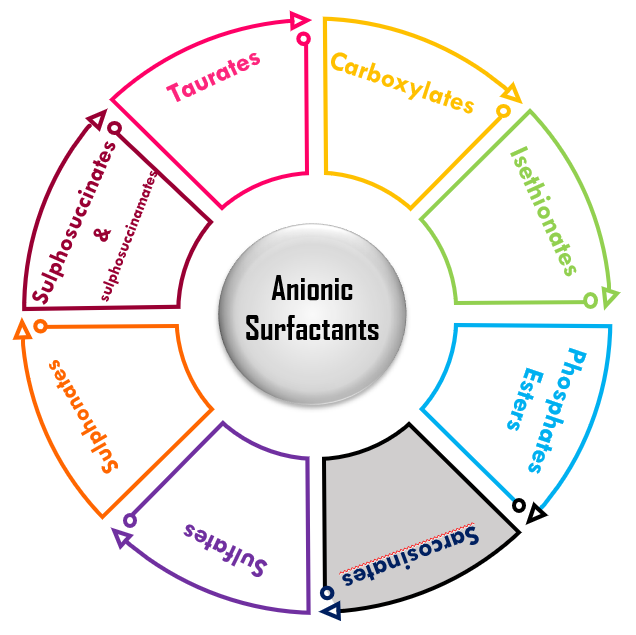Description
Made from a fatty acid chloride and N-methyl glycine:
RCOCI + CH3NHCH2COOH → RCON(CH3) CH2COOH (catalyzed by alkali) + NaCl
The product as made contains sodium chloride which can be removed. Most commercial products contain considerable amounts of sodium chloride.
General properties
-
General
More acidic than fatty acids and therefore there is less need to avoid free acid and pH control is easier; similar properties to isethionates.
-
Solubility
Sodium salt not very soluble in acid or neutral pH but quite soluble in alkali; TEA salt more soluble at neutral pH.
-
Compatibility
- with other surfactants: Good compatibility with anionic, non-ionic, and cationics where they do not adversely affect the bactericidal properties; compatible with quaternaries and phenolic biocides.
- with aqueous ions: Excellent, e.g. good foam with TEA salt in hard water.
-
Chemical stability
Stable in acid and moderate acid at normal temperatures; unstable in strong acid or acid at high temperatures, loses foaming characteristics and thickens appreciably.
-
Functional properties
Foams well even in presence of sebum and oils; foams better in hard water than soft water; good lime soap dispersant; some bacteriostatic activity claimed.
Applications
-
Household products
Toothpaste ingredient, enzyme inhibiting, strong foamer, good detergent; liquid soaps.
-
Personal care
Foaming agent in shampoos, boosts lather of alkyl sulfates in presence of sebum and good foaming in the presence of soaps; detoxifying agent in shampoos; addition to anionics improves mildness, conditioning and foaming; shaving preparations; foam baths; facial cleansers.
-
Surgical scrubs
-
Corrosion inhibitor
Specification
| Activity | 30% for Na salt
40% for TEA salt |
| Acid value | 50-60 mg KOH/g |
| Sodium chloride | 1-5% |

